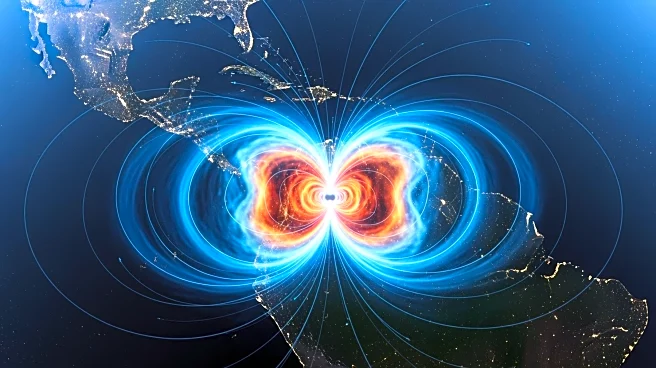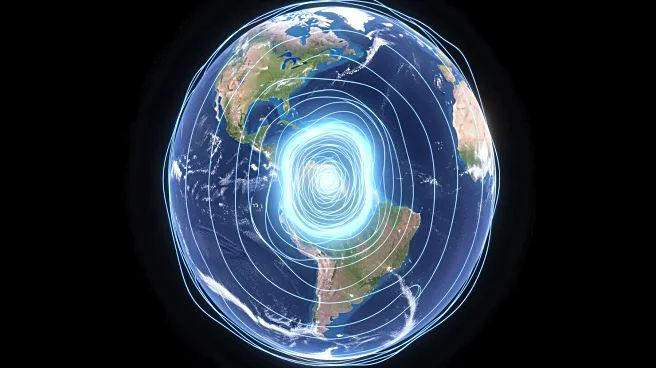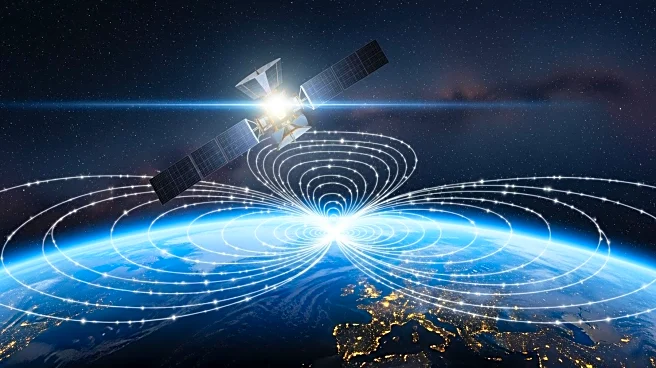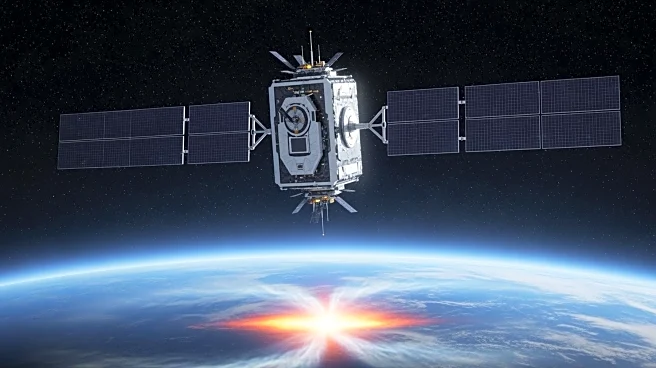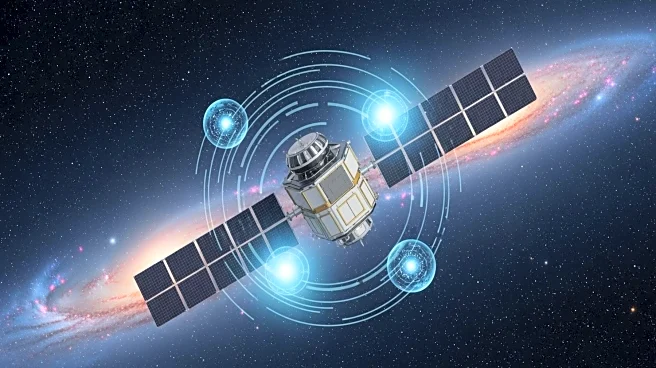What's Happening?
The South Atlantic Anomaly, a weak spot in Earth's magnetic field, has been expanding rapidly over the past eleven years, according to data from the European Space Agency's Swarm satellites. This anomaly, located over the South Atlantic, has grown to an area
equivalent to half the size of continental Europe. Researchers believe the anomaly is influenced by a swirling body of molten iron in Earth's outer core, among other factors. The anomaly's behavior is complex, with different changes occurring towards Africa and South America.
Why It's Important?
The expansion of the South Atlantic Anomaly has significant implications for navigation, space weather tracking, and understanding Earth's magnetic field dynamics. The anomaly affects satellite operations and can pose risks to technology reliant on magnetic navigation. Understanding the anomaly's causes and behavior is crucial for improving magnetic models and predicting future changes in Earth's magnetic field.
What's Next?
The European Space Agency plans to extend the Swarm mission beyond 2030, allowing continued monitoring of Earth's magnetic field and the South Atlantic Anomaly. Researchers will focus on identifying the factors contributing to the anomaly's expansion and its impact on global magnetic dynamics. This ongoing research will enhance predictive models and inform strategies for mitigating risks associated with magnetic field changes.
Beyond the Headlines
The study of Earth's magnetic field and anomalies like the South Atlantic Anomaly offers insights into the planet's internal processes and their impact on global systems. It underscores the importance of satellite technology in monitoring and understanding complex geophysical phenomena, contributing to advancements in Earth sciences and space exploration.
